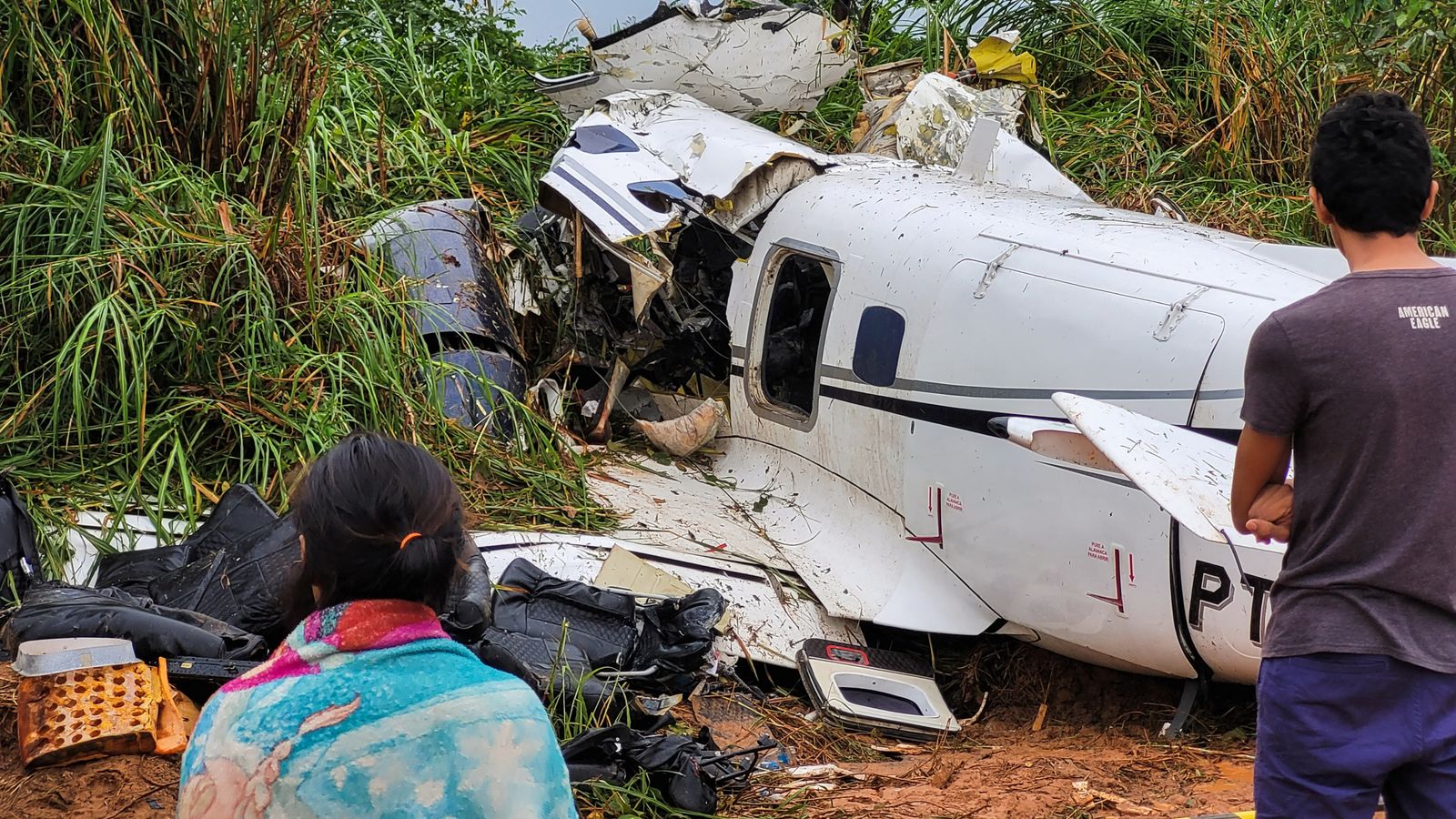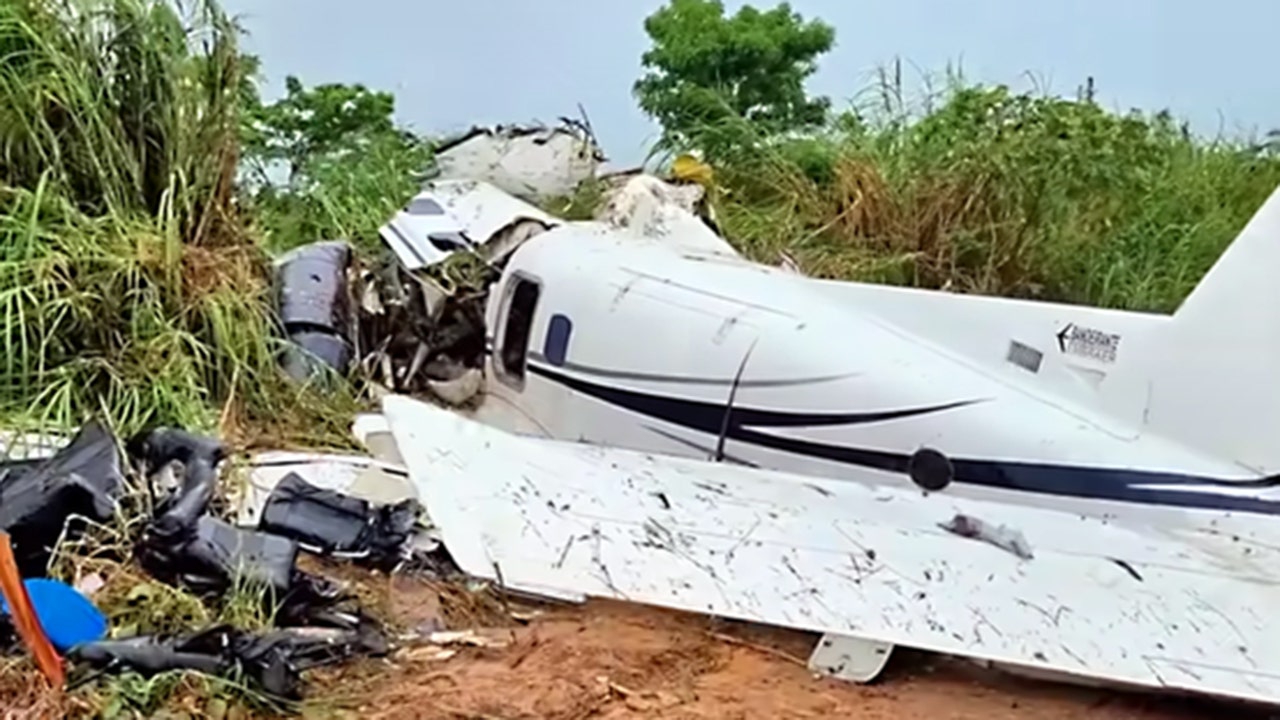Historical Overview of Plane Crashes in Brazil: Brazil Plane Crash Type

Brazil has a long and unfortunately, sometimes tragic history with aviation accidents. From the early days of commercial air travel to the modern era, the country has witnessed its share of devastating plane crashes. These events have not only resulted in significant loss of life but have also shaped the evolution of aviation safety regulations and practices in Brazil.
Timeline of Major Plane Crashes in Brazil
The following list presents a timeline of some of the most significant plane crashes in Brazil, highlighting the date, location, and number of casualties.
- 1946: The first major commercial aviation accident in Brazil occurred on January 21, 1946, when a Panair do Brasil Douglas DC-4 crashed near Belém, Pará, killing all 22 passengers and crew members on board. This incident underscored the importance of aviation safety and led to the establishment of stricter regulations and oversight.
- 1950: On July 31, 1950, a Cruzeiro do Sul Lockheed Constellation crashed near São Paulo, killing 42 people. The accident was attributed to pilot error and highlighted the need for improved pilot training and flight procedures.
- 1961: A VARIG Lockheed L-749A Constellation crashed near Belém, Pará, on August 25, 1961, killing 59 people. The crash was attributed to a combination of factors, including mechanical failure and pilot error.
- 1973: On September 3, 1973, a VARIG Boeing 707 crashed near Paris, France, killing 118 people. This accident, which occurred during a flight from Rio de Janeiro to Paris, was the deadliest aviation accident involving a Brazilian airline. The crash was attributed to a mechanical failure in the aircraft’s hydraulic system.
- 1982: A Transbrasil Boeing 727 crashed near São Paulo on January 17, 1982, killing 137 people. The accident was attributed to pilot error and poor weather conditions.
- 1989: On September 3, 1989, a TAM Airlines Fokker F28 Fellowship crashed near São Paulo, killing 93 people. The crash was attributed to a combination of factors, including mechanical failure and pilot error.
- 2006: A Gol Airlines Boeing 737-800 crashed near the Amazon rainforest on September 29, 2006, killing all 154 people on board. The accident was attributed to a midair collision with a Legacy 600 business jet.
- 2007: On July 17, 2007, an Air France Airbus A330-200 crashed near Fernando de Noronha, Brazil, killing all 228 people on board. The crash was attributed to a combination of factors, including mechanical failure and pilot error.
Impact on Aviation Safety and Regulations
These crashes have had a profound impact on aviation safety and regulations in Brazil. They have led to:
- Strengthened Oversight and Regulations: The Brazilian National Civil Aviation Agency (ANAC) has implemented stricter regulations and oversight of the aviation industry, including more stringent pilot training requirements, improved aircraft maintenance standards, and more rigorous safety inspections.
- Improved Aircraft Safety Technology: The introduction of new technologies, such as collision avoidance systems and flight data recorders, has helped to improve aircraft safety and prevent accidents.
- Enhanced Aviation Safety Culture: These accidents have also contributed to a more proactive safety culture within the Brazilian aviation industry, with a greater emphasis on risk management, accident investigation, and continuous improvement.
Contributing Factors to Plane Crashes in Brazil
Contributing factors to plane crashes in Brazil have included:
- Weather Conditions: Brazil’s diverse geography and climate can pose significant challenges to aviation. Tropical storms, heavy rain, and thunderstorms can disrupt flight operations and increase the risk of accidents.
- Pilot Error: Pilot error has been a contributing factor in many aviation accidents in Brazil. This can include mistakes in navigation, communication, or decision-making.
- Mechanical Failures: Mechanical failures in aircraft can also lead to accidents. This can include engine failures, hydraulic system malfunctions, and structural defects.
- Maintenance Issues: Inadequate maintenance practices can also contribute to accidents. This can include delays in repairs, insufficient inspections, and the use of substandard parts.
- Air Traffic Control Issues: Air traffic control issues, such as communication breakdowns and airspace conflicts, can also contribute to accidents.
- Security Concerns: Security concerns, such as terrorism and sabotage, have also been a factor in some aviation accidents in Brazil.
Types of Plane Crashes in Brazil

Plane crashes in Brazil, like in any other country, are unfortunately a reality. Understanding the different types of crashes that occur and their contributing factors is crucial for improving aviation safety. This section will delve into the various categories of plane crashes in Brazil, exploring their characteristics, causes, and frequency over time.
Controlled Flight Into Terrain (CFIT)
Controlled Flight Into Terrain (CFIT) crashes occur when an aircraft, under the control of the pilot, unintentionally flies into terrain, obstacles, or water. This type of crash is often attributed to pilot error, such as spatial disorientation, inadequate situational awareness, or poor decision-making. CFIT crashes can also be caused by factors such as weather conditions, inadequate navigation equipment, or fatigue.
CFIT crashes are often preventable, and a significant focus in aviation safety is on pilot training and procedures to mitigate this risk.
Loss of Control (LOC)
Loss of Control (LOC) crashes happen when the pilot loses control of the aircraft during flight. This can occur due to various factors, including mechanical failure, adverse weather conditions, pilot error, or a combination of these factors. LOC crashes are often characterized by rapid and unexpected changes in altitude, speed, or direction.
LOC crashes are often difficult to investigate, as the causes can be complex and multi-faceted.
Mid-Air Collision
Mid-air collisions occur when two or more aircraft collide in flight. These crashes are usually caused by a combination of factors, such as inadequate air traffic control procedures, pilot error, or weather conditions. Mid-air collisions are often catastrophic events, resulting in significant loss of life and damage.
Mid-air collisions are relatively rare but are often highly publicized due to their devastating consequences.
Mechanical Failure
Mechanical failures can lead to plane crashes when components of the aircraft malfunction, causing loss of control or other critical issues. These failures can be caused by a variety of factors, including manufacturing defects, improper maintenance, or environmental conditions.
Mechanical failures are often investigated by aviation authorities to identify the root cause and prevent similar incidents in the future.
Terrorism, Brazil plane crash type
Terrorist attacks on aircraft are a rare but serious threat. These incidents are often characterized by deliberate acts of violence aimed at causing harm or destruction.
Terrorist attacks on aircraft are typically investigated by law enforcement and intelligence agencies to identify and apprehend the perpetrators.
Notable Plane Crash Investigations in Brazil

Brazil has a long and unfortunately, sometimes tragic, history with aviation accidents. In the face of these incidents, the country has developed a robust system for investigating air crashes, aimed at understanding the causes and implementing preventative measures to improve aviation safety. These investigations, while often complex and emotionally charged, are crucial in learning from past mistakes and ensuring safer skies for the future.
The Investigation Process
The investigation process for major plane crashes in Brazil is led by the Brazilian Civil Aviation Agency (ANAC), with the assistance of the Brazilian Air Force (FAB). The process typically involves several stages:
- Initial Response: The first responders to the crash site secure the area, provide medical assistance to survivors, and document the scene.
- Data Collection: Investigators collect data from various sources, including the aircraft’s flight data recorder (FDR) and cockpit voice recorder (CVR), witness testimonies, weather reports, air traffic control records, and the wreckage itself.
- Analysis: The collected data is analyzed to determine the sequence of events leading to the crash. This involves examining the aircraft’s systems, the pilot’s actions, and environmental factors.
- Findings and Recommendations: Based on the analysis, investigators determine the probable cause of the crash and issue recommendations to prevent similar accidents in the future. These recommendations might include changes to aircraft design, pilot training, air traffic control procedures, or regulations.
- Public Report: The findings of the investigation are published in a public report, which is available to the public and aviation industry stakeholders.
TAM Airlines Flight 3054
This tragic accident occurred on July 17, 2007, when a Boeing 737-800 operated by TAM Airlines overran the runway at Congonhas Airport in São Paulo, Brazil, and crashed into a fuel depot. The accident resulted in 199 fatalities and was the deadliest aviation accident in Brazil’s history. The investigation concluded that the primary cause of the accident was the pilot’s decision to attempt a landing in heavy rain and strong winds, despite being aware of the challenging conditions. The investigation also found that the runway’s surface was wet and slippery, contributing to the aircraft’s inability to stop.
“The investigation determined that the probable cause of the accident was the pilot’s decision to attempt a landing in adverse weather conditions, coupled with the runway’s slippery surface.”
The investigation into TAM Flight 3054 led to significant changes in Brazilian aviation safety. These included:
- Runway Safety Enhancements: Improvements were made to runway surfaces at Congonhas Airport, including the installation of new drainage systems and runway grooving to enhance traction.
- Pilot Training: The investigation highlighted the need for improved pilot training, particularly in handling aircraft in challenging weather conditions. The training curriculum was revised to include more emphasis on decision-making, risk assessment, and emergency procedures.
- Operational Procedures: The investigation led to changes in operational procedures, including the implementation of stricter weather minimums for landing at Congonhas Airport and the development of new procedures for aircraft overruns.
Gol Transportes Aéreos Flight 1907
This accident occurred on September 29, 2006, when a Boeing 737-800 operated by Gol Transportes Aéreos collided with a Legacy 600 business jet over the Amazon rainforest in Brazil. The accident resulted in 154 fatalities. The investigation determined that the primary cause of the accident was the failure of the air traffic control system to properly monitor the aircraft’s positions and to provide adequate separation. The investigation also found that the Legacy 600 was flying at an altitude that was not authorized by air traffic control.
“The investigation concluded that the probable cause of the accident was the failure of the air traffic control system to properly monitor the aircraft’s positions and to provide adequate separation.”
The investigation into Gol Flight 1907 led to several important changes in Brazilian aviation safety, including:
- Air Traffic Control System Upgrades: The investigation highlighted the need for modernization and improvement of the air traffic control system in Brazil. This led to the implementation of new technologies, such as radar systems with enhanced capabilities and the introduction of a more robust system for tracking aircraft movements.
- Pilot Awareness: The investigation also emphasized the importance of pilot awareness of the surrounding airspace and the need for pilots to maintain proper separation from other aircraft. The training curriculum was revised to include more emphasis on situational awareness and collision avoidance techniques.
The investigation into the Brazil plane crash type is complex, requiring a thorough analysis of various factors. While we delve into the technical aspects, it’s important to note that the upcoming presidential debate dates are also a significant event, potentially impacting the political landscape and influencing public opinion.
This event, along with the investigation, will shape the national discourse in the coming weeks.
The investigation into the Brazil plane crash is a complex one, with experts examining every detail to determine the cause. It’s a reminder of the fragility of life and the importance of safety measures. Similar investigations into tragedies, like the recent fox presidential debate , often raise questions about security protocols and their effectiveness.
Ultimately, the goal is to learn from these events and prevent similar tragedies from happening in the future.
